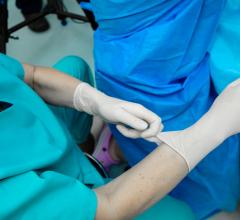February 1, 2013 — The first outcome-based guidelines for interventional treatment of acute ischemic stroke — providing recommendations for rapid treatment — will benefit individuals suffering from brain attacks, often caused by artery-blocking blood clots. Representatives from the Society of Interventional Radiology (SIR) and seven other medical societies created a multispecialty and international consensus on the metrics and benchmarks for processes of care and technical and clinical outcomes for stroke patients.
The guidelines will be published first in SIR's Journal of Vascular and Interventional Radiology and subsequently by each society either in its respective journal or on its website.
"These groundbreaking guidelines are the product of two years of collaboration among multidisciplinary teams from eight societies," said Marshall E. Hicks, M.D., FSIR, president of the Society of Interventional Radiology, the national society of nearly 5,000 doctors, scientists and allied health professionals dedicated to improving health care through minimally invasive treatments. "With real progress being made in research and treatment of stroke over the last decade, this distinguished group of international authors — from societies whose members perform minimally invasive stroke treatments — felt that the time was right for a consensus on how to effectively treat and manage stroke patients," said Hicks, the head of the division of diagnostic imaging at the University of Texas MD Anderson Cancer Center in Houston.
"The one constant in stroke treatment is time," noted David Sacks, M.D., FSIR, an interventional radiologist at Reading Hospital and Medical Center in West Reading, Pa., and the study's lead author. "Seconds count from time of admission to treatment. Meeting the outcomes described in these guidelines will ultimately benefit patients by requiring strict adherence to a rapid treatment schedule," he added. Stroke is the fourth leading cause of adult death and disability in the United States and the third leading cause of death in Canada, Europe and Japan.
The guidelines recommend submission of outcomes to a national registry that will allow research and also comparisons between facilities. Sacks noted that the benchmarks in the paper are intended to be used in a quality assurance program to assess and improve processes and outcomes in acute stroke revascularization, which is the opening of a blocked artery to the brain. He said that the guidelines may also be helpful to facilities that are interested in applying for accreditation as a comprehensive stroke center. "As the field of stroke revascularization evolves, the guidelines will be revised as needed," he added.
In 2003, the Journal of Vascular and Interventional Radiology published a joint society document to guide the design and reporting of stroke research; the new guidelines address clinical care. The co-authors completed a review of the relevant literature from 1986 through February 2012 as the basis for creating performance metrics and thresholds. "All society representatives vigorously discussed each issue based on the literature review and personal experience," said Sacks.
For more information: www.SIRweb.org


 March 04, 2025
March 04, 2025 





